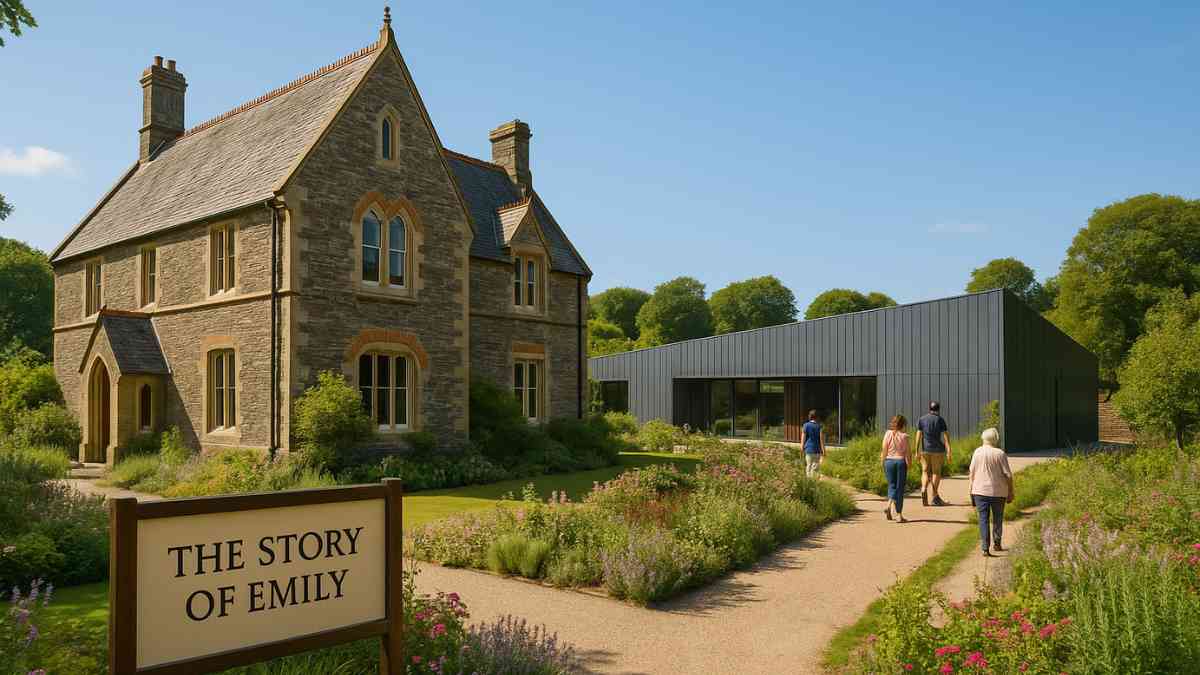Emily Hobhouse Museum: A Cornish Legacy of Courage and Compassion

The emily hobhouse museum—branded as The Story of Emily—brings to life the story of Emily Hobhouse (1860–1926), a Cornish-born humanitarian whose brave actions during the Anglo‑Boer War exposed the dire conditions within British-run concentration camps. Set in her childhood rectory at St Ive, Cornwall, and complemented by dramatic exhibition spaces, the museum offers a deeply emotional and educational experience.
The Rectory – A Journey Back to Victorian Cornwall
Grade II Listed Heritage
Emily’s former home, built in the mid‑19th century in Gothic‑Revival style, has been authentically restored to reflect its appearance around 1875, when she was a young teenager.
Authentic Restoration and Atmosphere
Interior features include period wallpaper, furniture, schoolbooks and coal stores. The experience is immersive—visitors can ring the bell, wear period attire, handle artefacts and feel as though they are part of the Hobhouse family’s everyday life.
The War Rooms – Confronting Injustice Through Experience
Stark Contrasts in Architecture
Situated a short walk from the Rectory, the War Rooms present a zinc-clad, inward-facing structure that visually jarrs from the stone vernacular, preparing the visitor for the emotional intensity of the exhibit.
Immersive Multisensory Design
Inside, installations—from VR and audio narration to film and heat effects—simulate the harsh environment of Boer concentration camps. Ambient temperature, lighting and sound combine to bring the visitor into the heart of Hobhouse’s investigations.
Historic Truth with Technology
The War Rooms use thematic spaces to chronicle Hobhouse’s journey, the experiences of Boer women and children, and the global impact of her campaigning. Artefacts and historic images deepen the emotional impact.
Architecture and Landscape – A Dialogue of Past and Present
Stonewood Design’s Vision
Led by Stonewood Design, the architectural project skilfully balances the local stone-built heritage with bold, modern interventions. This approach earned RIBA South West & Wessex Awards in 2025.
LT Studio’s Landscape Design
The outdoor spaces blend a Victorian kitchen garden, woodland paths and a contemplative mound offering views across Bodmin Moor. These purposeful designs echo themes of growth, reflection and reconciliation.
Material Symbolism and Light
Natural materials—masonry, glass, timber—reference Hobhouse’s rural childhood, while the use of yellowwood in the café and zinc on the War Rooms nods to her South African work. Skylights and large windows create light and contemplative spaces, balanced by darker, focused exhibition zones.
Visitor Experience – Practical Insights
Opening Times and Admission
Open Wednesday–Sunday (9 am–5 pm), with timed entry for both the Rectory and War Rooms. Tickets are priced at £25 per adult, £12 per child; annual passes available (£35/£15).
Café, Shop and Garden
The café, designed in partnership with Cantifix and Sedak, features expansive glazing onto the productive garden. It offers heritage dishes and South African‑inspired refreshments like rooibos iced tea.
Accessibility and Booking
Visitors should pre-book timed slots. Some historic rooms and paths may be challenging for wheelchair users. Gravel pathways and garden access suggest sturdy footwear .
Families, Schools and Engagement
Interactive trails, family-friendly exhibits and quieter midweek visits (especially Wednesdays) offer engaging experiences for younger audiences .
Emily Hobhouse – Life, Legacy and Learning
Pacifist and Whistle‑blower
In 1901, Emily Hobhouse journeyed to South Africa and documented the appalling conditions in British-run camps—reporting on extreme mortality among Boer women and children. Her reporting led to public debate and the appointment of a special commission, though she was met with hostility at home.
Recognition Abroad
While largely overlooked in Britain, Hobhouse became widely honoured in South Africa—receiving honorary citizenship, memorials and a state funeral. She is still celebrated in South African history.
Modern Relevance
Historians like Elsabé Brits frame Hobhouse as a feminist, anti-imperial and humanitarian pioneer. The museum’s opening and recent commemorative events (165th birthday, centenary of her death) reflect a renewed interest in her life and message.
Conclusion
The Emily Hobhouse Museum transcends mere historic commemoration—it unites heritage architecture, immersive design and compelling storytelling to rekindle respect for a courageous Cornish humanitarian. Visitors can wander through her family home, absorb the grave truths of the War Rooms, reflect in the gardens, and savour heritage dishes—all set within a beautifully realised architectural narrative.



